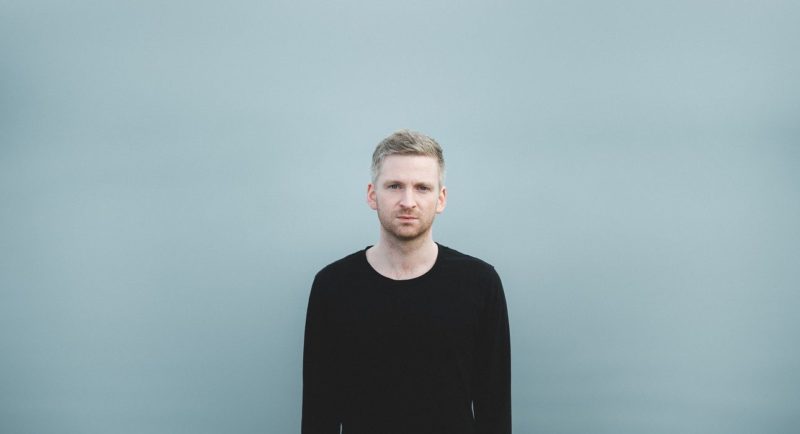During the last ten years, there has been quite the hype around Neo-Classical music. All around the world, musicians rise up to contribute to the once unique genre. You could almost call it a mass phenomenon. Of course, it is always great for artists to be listened to and appreciated by many people but, unfortunately, one problem often occurs when a genre gets hyped: the original spirit gets lost somewhere along the way to popularity.
Only a few people – mostly the musicians themselves – know what’s hidden behind the music. Mainstream listeners usually don’t care about how the music emerged or the artist’s intention. That might be fine by people who regard Neo-Classic as background music. But when you actively listen to the music, not knowing the story behind leaves a massive gap in the understanding of it. So, as a fan of this sort of sound I decided to shed some light onto the inflationary-used term Neo-Classic and spoke to two musicians about the problem. German pianist Martin Kohlstedt, and Icelandic composer Ólafur Arnalds are both considered to be making Neo-Classical music, although their views, opinions and, of course, their music is very different.

Martin Kohlstedt live, Photo by Mike Zenari
The term
Neo-Classic stands for the combination of classical and instrumental music with modern pop elements. Synthesizers, electronic parts, and manipulated instruments – there are no boundaries. But is the term appropriate? Asking the two musicians about their relation to the genre-term, two different opinions emerge. Martin Kohlstedt, on the one hand, admits that he is very happy to be part of the Neo-Classical wave and its openness. But, on the other one, he dislikes the origin of the term and its analogy to the musical elite derived from the latter part of it. “Neo-Classic is a good thing. It inspires and connects musicians around the world. There are many people who have been creating this kind of music for a long time. Already during the 90s wave, choirs were mixed with hip-hop beats adding new facets to classical arrangements. Today, even I can sometimes barely escape the new Neo-Classical trends. It’s a curse and a blessing at the same time. We have new kinds of elitist forms growing out of the genre. Sometimes it’s hard to stay true to oneself. Still, I like that there is discourse and that nothing is set in stone. I don’t like static things.”
His Icelandic colleague has no use for the term Neo-Classic at all: “I don’t really like the term but it’s out of our control. People seem to have settled on the name but nobody asks the artists what they think. I believe it doesn’t fit because it’s not classical music. And “neo” sounds like something that is played in a massage place. In my opinion it’s just not a good description of what we do. I don’t have a better one but I also don’t care to be honest.”
The Criticism
There is another aspect going hand in hand with the genre-ascription: the criticism that the music isn’t innovative enough, uses too many repetitions, as well as, only trivial melodies. In Arnalds’ opinion this critique mostly comes from the classical world, as they feel like the musicians are stepping on their toes. “They say that about us because we play a piano and a violin. But taking any other ambient or minimalist musician they wouldn’t say anything like that. “ Besides, he admits that he is not being bothered by other people’s opinions, Arnalds does his own thing without caring much about the critics.
Martin Kohlstedt, on the contrary, agrees that his music does meet some of the imposed characteristics. It is reduced and meditative but that does not make it boring, the musician argues.
“To me, just letting things happen is an important aspect of Neo-Classic composing. Nowadays letting things take their course isn’t that easy anymore. Planning, defining, composing, and over-analyzing sometimes distracts from the essence of the music. I think the melodic repetitions and the catchiness of the music are a great way to connect to the subconscious and something emerges that perfectly thought out compositions just can’t achieve. In a way, focusing on one tone is about getting to the core of things and letting intuition take the lead.”
The state, the ethos
Neo-Classic went from being a niche to somewhat close to a mass phenomenon. Big streaming playlists feature the restrained piano music and sell it to mainstream listeners. In general, the way of consuming music has changed a lot over the past few years – from whole albums to singles in playlists. “There are many things wrong with Neo-Classic,” explains Arnalds, “And to me, this is mostly the fault of streaming playlists. The more generic the music gets, the more likely it is to earn a spot on a big playlist and then the label makes money. Of course, labels then sign acts that sound similar! Those are the artists that get plays and generate profit through these algorithmic playlists. But I don’t call that Neo-Classical and I do not think I am part of that business.”
“You can’t define Neo-Classical music simply as soft sounding pianos,” the Icelandic artist goes on.
“A genre should be defined by its ethos but playlists and labels have nothing to do with that. Ethos is why I started making music in the first place; to connect with people in real life, to influence people and to not just be background music”.
Martin Kohlstedt partly agrees: “Major labels only see the commercial aspects of Neo-Classical music and promote musicians who do not always follow an original concept. Some artists even get pushed into becoming part of the commercial wave. In my opinion, many aspects of Neo-Classic today are constructed. The music that used to be internally motivated is now influenced by the outside; a fact everyone should pay attention to.”
The future
Martin Kohlstedt and Ólafur Arnalds do not only relate in musical genre (at least from an outside perspective), but also the eagerness to experiment. Both are more than solo artists making instrumental music; they are adventurers connecting musical elements in new ways. Kohlstedt, for instance, recorded his latest album Ströme with a full choir. On tape, the multiple voices melt together to one completely new instrument. Arnalds has also experimented with organic vocals in the past using them sometimes as an instrument (e.g. Unfold feat. SOHN) and at others as lyrical addition to his songs (e.g. For Now I Am Winter feat. Arnór Dan).
“It is important to remain open-minded, even towards the things that seem new and impossible at first”, the German pianist says.
“Creating a dialogue between different musical elements and styles encourages new development – like I did with the Gewandhauschoir. By merging the instrumentation with abstracted voices a new dimension comes together. The choir of seventy people creates a feeling of community and transfers internal visions into external pieces of music. And this is my hope for the future as well: that we can finally break classical structures and provoke new discussions.”
Ólafur Arnalds doesn’t approach his musical experiments with a certain recipe and does not feel the urge to burst existing structures: “Most of these experiments happen because whenever I meet someone I connect with I try to work with that person, whether it’s a cellist or a singer. I choose the people I work with based on their personality and their way of creating art.” Looking ahead, Arnalds doesn’t want to settle on strict formula. For him it is about following the internal drive to create and then seeing where it leads. Yet, regarding Neo-Classic he can’t really imagine much development:
“The term is a bit overhyped right now, to the point where it can easily become a cliché. And that’s why we have to remind people that we are trying to speak to them rather than being deemed as background music.”
The essence
One thing is clear, as pretty as it sounds the term ‘Neo-Classic’ has downsides to it. While it opens doors for some, it also confines to a certain way of being received by the world. People tend to forget the origins behind the music and don’t think about what the genre means to the artists labeled by it. Honest musicians like Arnalds and Kohlstedt can barely survive in the face of generic mainstream music created to yield profit. The ethos and the messages behind the art fade and listeners need to be reminded why musicians started making music in the first place: to connect through individual expression. By being downgraded to background music, the essence of their work cannot surface.
The genre has arrived at a tricky crossroad. It’s not an independent anymore and is not yet a mainstream phenomenon, either. We have to be cautious to not lose the original spirit completely. If so, innovative musicians like these two gentlemen do not stand a chance against the commercial music industry. We need to pay attention to the difference between those aspects of the Neo-Classical wave and make a conscious decision for the right side: the honest music, the original art, that is still eager to experiment and does not deserve to be confined to mere background entertainment by its label.
Ólafur Arnalds‘ most current album re:member is out now via Mercury/ Universal.
Martin Kohlstedt‘s current record is called Ströme is out now via Warner Classics.




